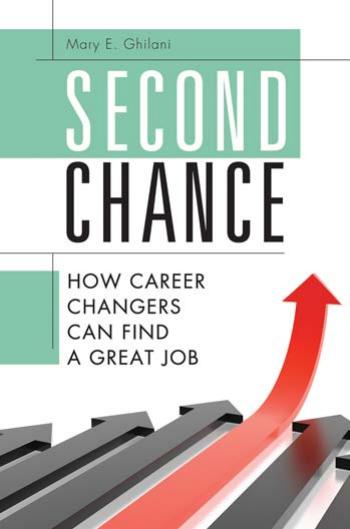Second Chance: How Career Changers Can Find a Great Job by Mary E. Ghilani

Author:Mary E. Ghilani
Language: eng
Format: epub, pdf
Tags: 9781598843583, Business & Economics, Career changes, Careers, General, Human Resources & Personnel Management, Job Hunting, Job hunting
ISBN: 9781598843583
Publisher: Praeger
Published: 2010-04-09T18:38:45.476000+00:00
86
SECOND CHANCE
PAYING FOR SCHOOL
Many companies offer tuition reimbursement benefits for their employees.
Some pay all tuition costs, whereas others will pay only a portion of the cost.
Check with the human resources department at your place of work to see what tuition reimbursement benefits your company offers.
If you are unemployed and qualify for Trade Act (TRA) benefits or any other type of funding through your local One Stop Career Center, take advantage of that opportunity to train for a new career. Consider going back to school to make yourself more marketable in the event you are not able to find employment in your former career.
Donald
Donald had a BS in English—but he had also taken business courses and had five years’ job experience in accounting in a manufacturing firm. Last year, he was laid off because his company closed its operations and relocated to Mexico.
Because Donald already has a college degree, he is in a better position than most of his colleagues in the manufacturing plant, who did not have any education beyond high school. With TRA benefits, he now has the opportunity to go back to school, which was something he always wanted to do. Donald debated between finishing an accounting degree and then applying to graduate school to pursue an MBA or teaching English. After doing some research, he found he could finish the requirements for a teaching degree in less time than it would take to complete an MBA. Two and a half years later, he graduated with a teaching certificate and began a position in his new career teaching English at a local high school.
There are many sources of federal, state, and local financial assistance available to career changers. Financial aid is available in three forms: grants and scholarships (which do not have to be repaid), loans (must be repaid), and work-study (campus-based employment). The majority of financial aid is funded by the federal government (examples are the Pell Grant and Stafford Loan Programs), whereas other sources of student aid are funded through your state or your local college or university.
Federal and state grants are usually awarded to the most financially needy applicants, whereas scholarships are usually awarded to individuals who demonstrate academic achievement. Student loans are now available to anyone, regardless of income level, and repayment is usually spread out over a 10-year period of time.
If you do not qualify for financial aid or you still need to borrow more than the federal student loan limits allow, you can elect to borrow an educational loan from a commercial lender. These rates are usually one or two percentage points higher than on federal student loans but are a good alternative if you do not qualify for anything else.
In addition to financial aid, students and their families now have access to several federal tax benefits that help lower college expenses. Examples of such benefits are the Hope Scholarship tax credit and certain allowable deductions for the GO BACK TO SCHOOL
87
interest paid on student loans or for tuition payments. Check with your tax accountant for more details.
Download
Second Chance: How Career Changers Can Find a Great Job by Mary E. Ghilani.pdf
This site does not store any files on its server. We only index and link to content provided by other sites. Please contact the content providers to delete copyright contents if any and email us, we'll remove relevant links or contents immediately.
| Business School Guides | GMAT |
| Guides | Interviewing |
| Job Hunting | Job Markets & Advice |
| Resumes | Vocational Guidance |
| Volunteer Work |
The Motivation Myth by Jeff Haden(5125)
Audition by Ryu Murakami(4772)
Adulting by Kelly Williams Brown(4438)
The Confidence Code by Katty Kay(4158)
A Mind For Numbers: How to Excel at Math and Science (Even If You Flunked Algebra) by Barbara Oakley(3189)
Waiting in the Wings by Melissa Brayden(3149)
Self-Esteem by Matthew McKay & Patrick Fanning(3037)
Fooled by Randomness: The Hidden Role of Chance in Life and in the Markets by Nassim Nicholas Taleb(2976)
The ONE Thing by Gary Keller(2971)
Nice Girls Don't Get the Corner Office by Lois P. Frankel(2970)
The Dictionary of Body Language by Joe Navarro(2883)
How to be More Interesting by Edward De Bono(2719)
Designing Your Life by Bill Burnett(2620)
Getting Things Done by David Allen(2614)
The Plant Paradox by Dr. Steven R. Gundry M.D(2512)
Police Exams Prep 2018-2019 by Kaplan Test Prep(2442)
What Color Is Your Parachute? 2015 by Richard N. Bolles(2228)
Dangerous Personalities by Joe Navarro(2208)
When to Jump by Mike Lewis(2073)
